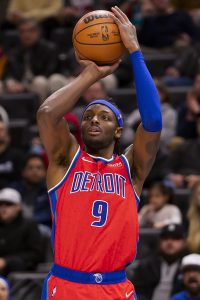Monday’s report stating that Nikola Jokic will win this season’s Most Valuable Player award means that Sixers center Joel Embiid will likely finish as the runner-up in MVP voting for a second straight year. It also means there’s a real chance Embiid could end up on the All-NBA Second Team for a second consecutive year, despite ostensibly being the league’s second-most valuable player.
Unlike the NBA’s All-Star teams, which call for two guards and three frontcourt players, or its All-Rookie teams, which are positionless, the All-NBA squads require voters to select two guards, two forwards, and one center. This means that only one of Jokic or Embiid is in position to make the All-NBA First Team, since both are centers.
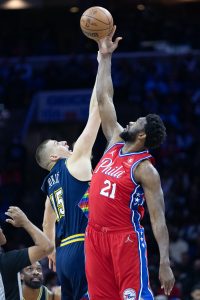 This season, the league made Jokic and Embiid eligible at forward as well as center, despite the fact that no reasonable NBA fan could argue that either player spent any real time at power forward this season. The decision is a concession to voters who feel that both players must be on the All-NBA First Team, allowing those voters to essentially disregard positions by listing one of Jokic or Embiid at forward instead of center.
This season, the league made Jokic and Embiid eligible at forward as well as center, despite the fact that no reasonable NBA fan could argue that either player spent any real time at power forward this season. The decision is a concession to voters who feel that both players must be on the All-NBA First Team, allowing those voters to essentially disregard positions by listing one of Jokic or Embiid at forward instead of center.
However, it’s a half-measure and one that will likely result in some messy voting results, since a player’s position for All-NBA purposes is the one where he receives the most votes. For instance, let’s say Jokic receives 80 First Team votes (60 as a center and 20 as a forward) and 20 Second Team (as a center) votes, while Embiid receives 60 First Team votes (40 as a center and 20 as a forward) and 40 Second Team votes (as a center).
In that scenario, the result would be the same as last year’s: Jokic would be the All-NBA First Team center, while Embiid would be the Second Team center, even if he has more points than one of the top two forwards, since 80 of his 100 votes came at center, not forward.
In order to have a shot at making the First Team as a forward, Embiid would need over half his voters to list him at forward. And in order for that to happen, at least half of the 100 voters would have to be willing to essentially disregard positions and would have to decide as a group which of the two star centers they’ll list as a forward.
In the grand scheme of things, a spot on the All-NBA Second Team vs. First Team isn’t a big deal, but it’s something we’ll look at down the road when comparing players’ career résumés. The league was willing to make a change to its All-Star voting to reduce the likelihood of an undeserving player making the cut or a deserving player missing out — should it do the same for its All-NBA vote?
We want to know what you think. Are you in favor of keeping the system the way it is, taking the All-Star approach (three frontcourt players instead of two forwards and a center), or removing positions from the equations entirely and asking voters to just select the season’s top 15 players?
If you had a ballot this year, would you have listed one of Jokic or Embiid at forward, or do you like the idea of sticking to the proper positions and putting one of them on the Second Team?
Head to the comment section below to weigh in with your thoughts!
 Through three games, Milwaukee holds a 2-1 lead in a hotly contested matchup. The first two games were both fairly lopsided, with the Bucks putting on a defensive clinic in Game 1’s 101-89 win, followed by the Celtics making key adjustments in a blowout 109-86 victory in Game 2, holding Milwaukee to just 3-of-18 on three-pointers.
Through three games, Milwaukee holds a 2-1 lead in a hotly contested matchup. The first two games were both fairly lopsided, with the Bucks putting on a defensive clinic in Game 1’s 101-89 win, followed by the Celtics making key adjustments in a blowout 109-86 victory in Game 2, holding Milwaukee to just 3-of-18 on three-pointers.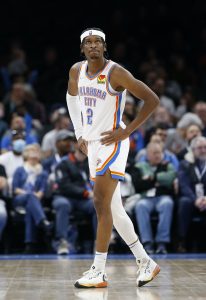 The Thunder will be a team worth watching close before and during the draft, since they still have a ton of unused cap room for the 2021/22 league year. That cap space will essentially disappear at the start of July when the new league year begins and
The Thunder will be a team worth watching close before and during the draft, since they still have a ton of unused cap room for the 2021/22 league year. That cap space will essentially disappear at the start of July when the new league year begins and 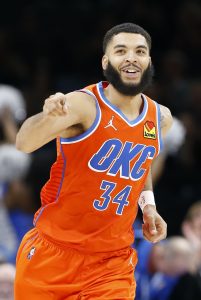
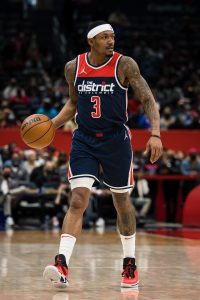 No cap hold can exceed the maximum salary for which a player can sign. For instance, the cap hold for a Bird player with a salary above the league average is generally 150% of his previous salary, as noted above. But for someone like Wizards star
No cap hold can exceed the maximum salary for which a player can sign. For instance, the cap hold for a Bird player with a salary above the league average is generally 150% of his previous salary, as noted above. But for someone like Wizards star 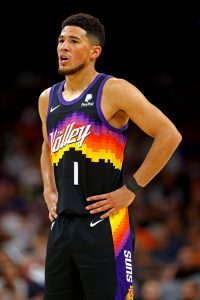 While the Suns may have looked more susceptible to a playoff upset in the first round than they did for most of the season, one crucial stat carried over to the postseason. After registering a ridiculous +33.4 net rating in “clutch” situations during the regular season, Phoenix improved that number to +35.0 in the first round.
While the Suns may have looked more susceptible to a playoff upset in the first round than they did for most of the season, one crucial stat carried over to the postseason. After registering a ridiculous +33.4 net rating in “clutch” situations during the regular season, Phoenix improved that number to +35.0 in the first round.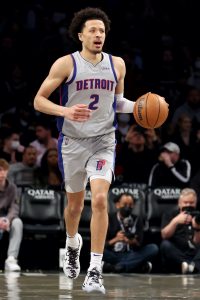 The team’s front office and ownership won’t want to rush the roster-building process, but after winning no more than 23 games in each of the last three seasons, they’ll likely be eager to take the next step forward as soon as possible.
The team’s front office and ownership won’t want to rush the roster-building process, but after winning no more than 23 games in each of the last three seasons, they’ll likely be eager to take the next step forward as soon as possible.